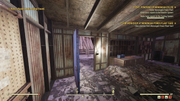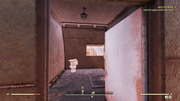Also, the point has never been to say it's not impossible to get good visuals without ray tracing, as shown, this is entirely possible, however:
- the devs need to spend a considerable amount of time doing this in order to achieve good results (which nowadays they don't have the luxury of), this is why devs are moving away from raster first and foremost
- they might make their games more limited in terms of being less open, less exporable, less dynamic in terms of destruction because of static lights, shadows and so on
Raster works well for linear/tunnel games although even then, it is arguable as to how good these are at times. The biggest problem is with open world games where it's impossible to get everything look correct. Even RDR 2 (incredible visuals) has many shortcomings/issues because of raster.
BTW, from that list, batman arkham knight is one that looks great but it's lighting etc. is actually pretty awful, the city/buildings etc. do not look grounded/apart of the ground, it's like a cardbox popup childrens book when you look at the skyline.
Ghost of tshumia could badly do with RT shadows at the very least, in wooded areas, all of the shadows are hard, they're not soft or diffused which makes it actually quite hard to see/play without being distracted by this.



